#European archaeology
Text
Weird things I have done as an archaeologist
Washing cannonballs
Comparing human leg bones to my leg
Balancing knee caps to see if they’re left or right
Smashed my head on a drill handle while I tried to look cool dropping 3 meters of stainless steel down a hole
Trying to rescue mice out of the trench using a shovel and screaming how you’re trying to help
Glass still cuts skin, even after 500 years. And me being the dumbass I am to swipe my finger across to clean it
Getting distracted because you’re convinced these two pottery shards match in some place
Pushing my thumb into the decorative indentation a potter has made 300 years ago cuz I’m still a child
Trying to match shoe prints to one of your colleagues
Surely google knows the brand name on this 100 year old shoe shine can
#archaeology#history#meme#history meme#archaeology meme#glass#pottery#pottery shards#skeleton#human skeleton#Indiana Jones#shoe prints#anthropology#anthropology meme#geography#paleontology#European archaeology#geology#archaeology problems
11K notes
·
View notes
Text

BALTIC-PONTIC STUDIES
Vol 25 - 2021
Globular Amphora Culture, Central and Eastern Groups: insight into new
chronometric and taxonomic data
Sinopse:
O vigésimo quinto volume dos Estudos Báltico-Pônticos reúne estudos adicionais – após os volumes nos. 4 e 8 – dedicados à cultura da Ânfora Globular. Sítios associados a esta unidade são encontrados nas vastas extensões da Europa Central e Oriental, desde a bacia do Reno, a oeste, até o rio Dnieper, a leste. Por sua vez, o seu impacto é identificado de forma ainda mais ampla – desde o Mar Báltico ao Mar Negro e ao Mar de Azov. No entanto, ao longo da vida dos grupos humanos relacionados à unidade em questão, seu coração localizou-se nas terras baixas da Europa Central. ...
segue lendo em: https://archaeoethnologica.blogspot.com/2023/02/baltic-pontic-studies-vol-25.html
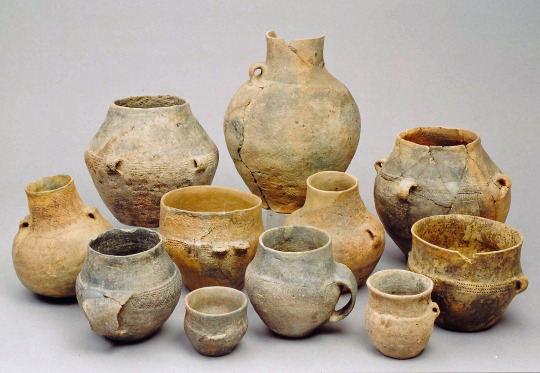
#archaeology#Globular Amphora Culture#Yamnaya culture#East European Archaeology#Ucraine#Poland#Central Europe#Central European Archaeology#Prehistory#Neolithic#Calcolithic#Prehistoric Archaeology#European Archaeology#Prehistoric European Archaeology#Cultural Conctats#Archaeological Cultures
0 notes
Text
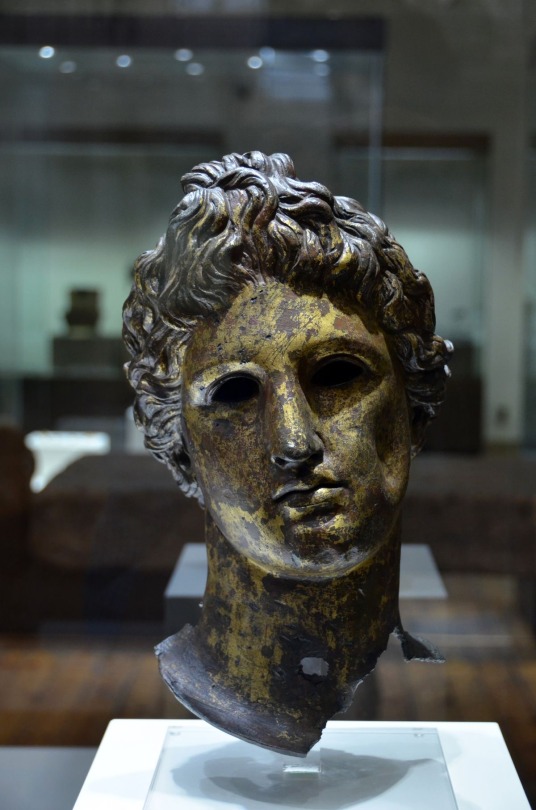
Roman period Head of Apollo
#apollo#ancient rome#art#gods#roman#roman mythology#religion#history#europe#european#thrace#thracian#serdica#serdika#sofia#bulgaria#archaeology#bulgarian#museum#olympian#deity#deities#greek mythology#mythology#olympians
3K notes
·
View notes
Text

shell necklace made of river mussels
stroked pottery culture, 4800-4400 BC
found in Šárka, Czech Republic
#neolithic#prehistory#stone age#artefact#archaeology#jewellery#stroked pottery culture#czech republic#archeology#my upl#central europe#european prehistory
255 notes
·
View notes
Text
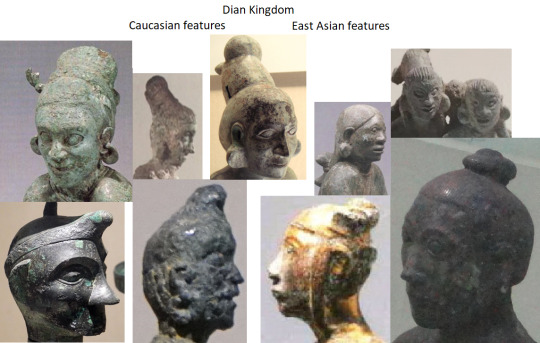

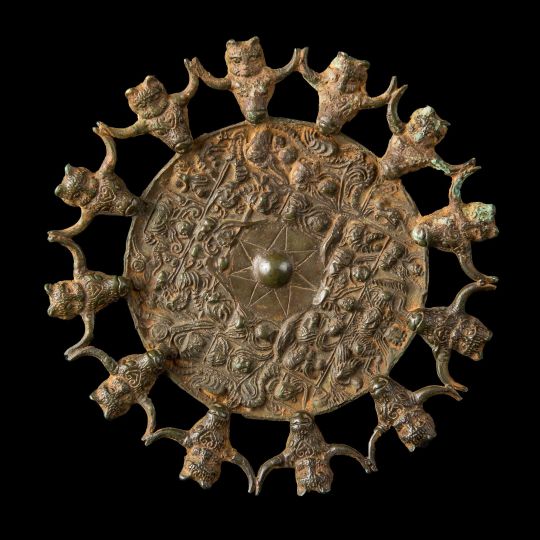
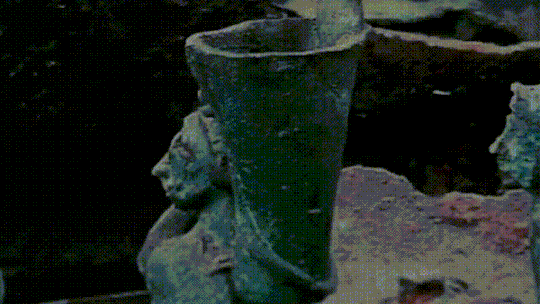

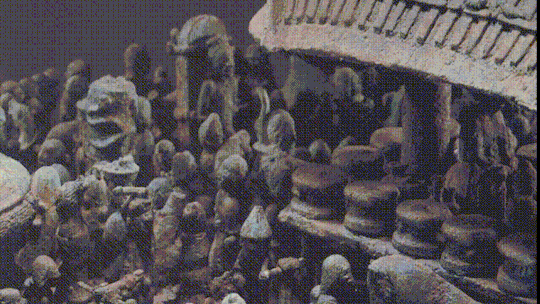

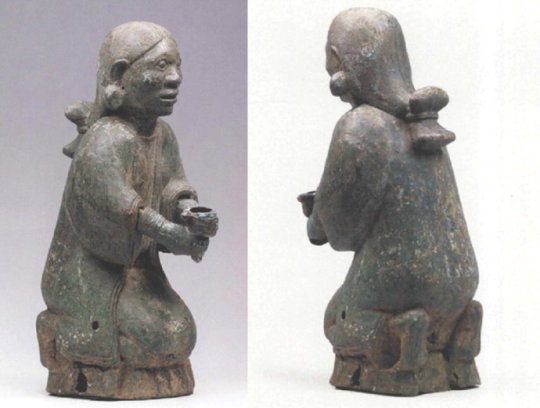

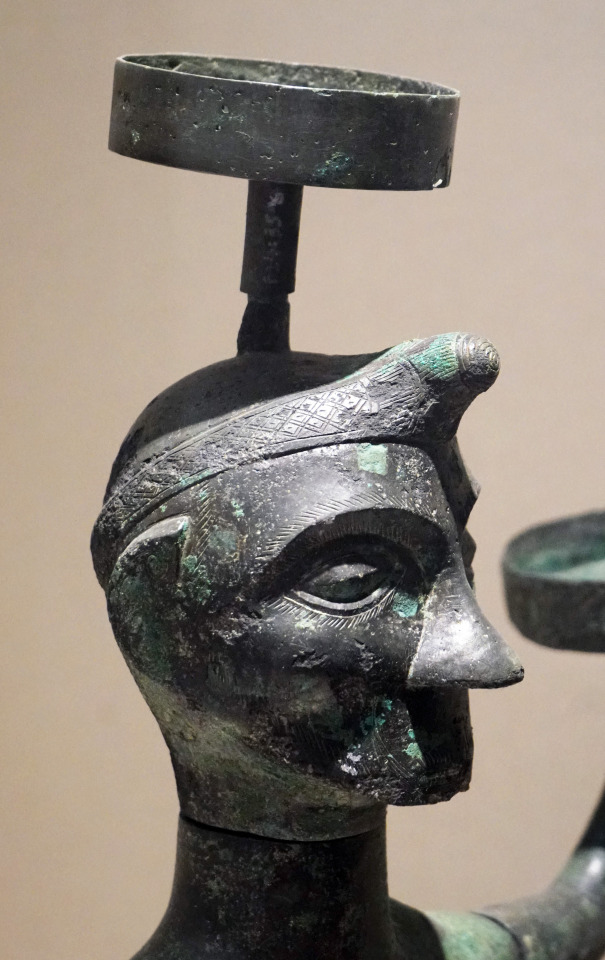

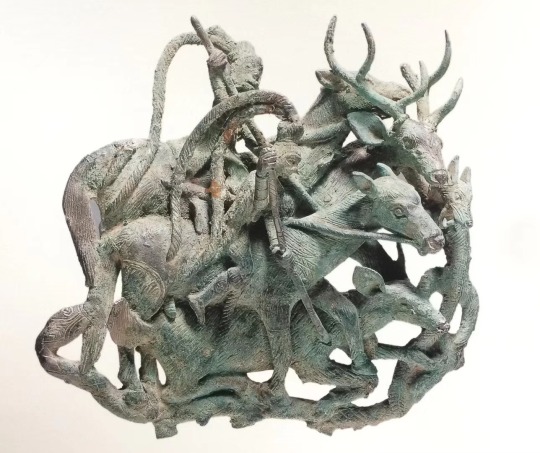





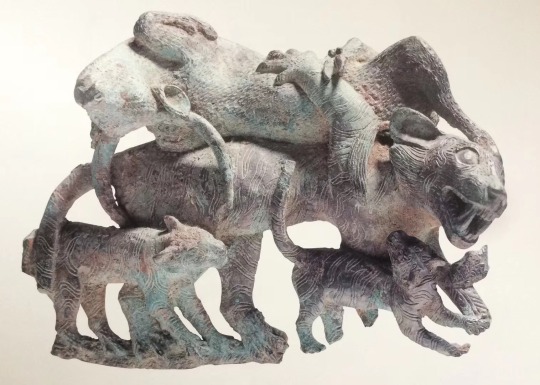

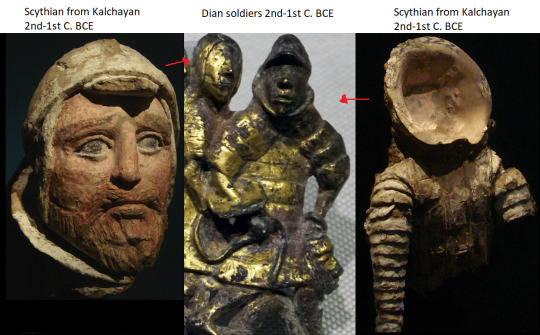
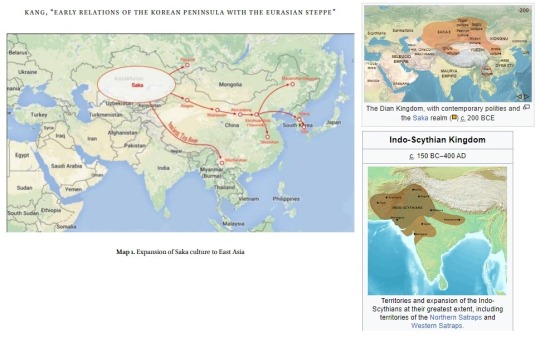


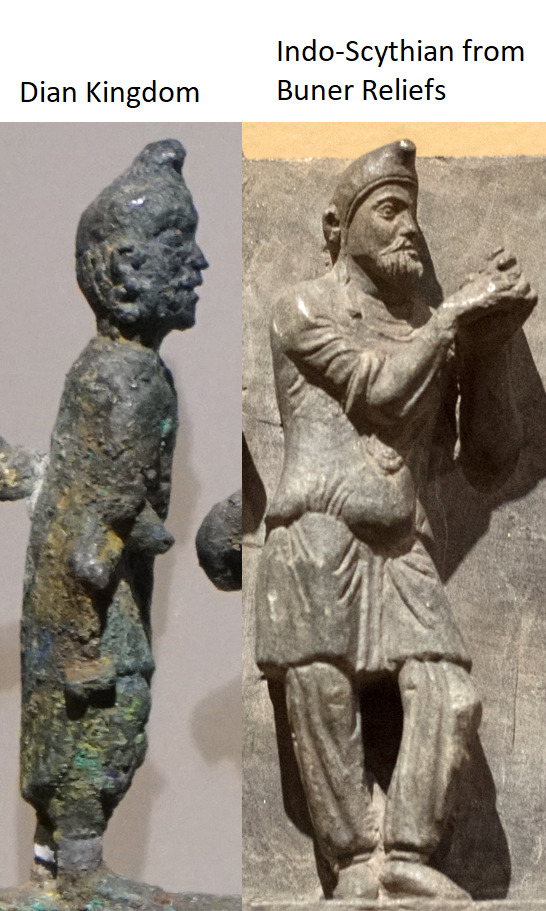


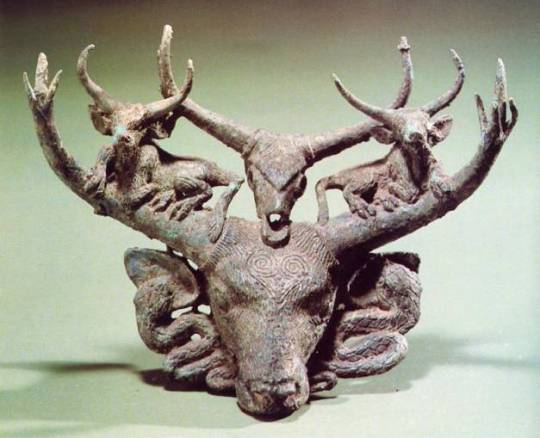
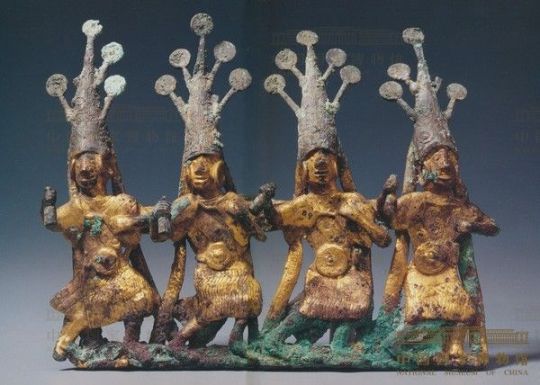

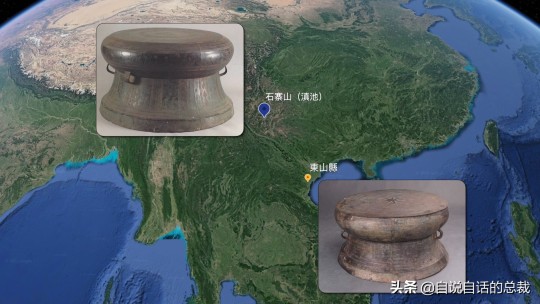
Dian Kingdom 8th-1st C. BCE. Meant to post this one a long time ago but it took me forever to put together. I'm just going to post 30 images here, I got about 100 total on my blog. Link at bottom.
The Dian Kingdom was an advanced civilization in what is modern-day southwest China. It was occupied by the Han Dynasty and incorporated into China after that. From what I've gathered, the people of the Dian Kingdom were probably closely related to the Baiyue people from southern China and northern Vietnam. Wikipedia says they may have spoke a Tibeto-Burman language. I found it interesting that some of these people look Caucasoid though and were wearing clothing similar to Scythians. The image I compared of the Dian man to the Indo-Scythian has a similar facial structure, hat, and even the same type of pants (sorry, I don't have time to tidy up the comparison photos more).
The Dian art theme of the four tigers attacking an ox is found in the same pre-Han period among the Xiongnu at Aluchaideng, and a similar motif appears at Tillya Tepe a couple centuries later. The theme is the same but the style is very different, still it indicates a connection to these places of the world through trade and exposure.
Some of the scenes with soldiers show a variety of different equipment styles and certain subjects have distinct fashion styles (like the people wearing the items that make their ears look huge). I watched a couple documentaries on genetics of the Dian and they were only able to find genetic info for one person, who was identified as similar to the Baiyue people. I'll link those youtube videos in sources below. I assume these people were primarily related to modern day Vietnamese and southern Chinese (or other people nearby) but may have had close interactions with (and even immigrants from) Scythian cultures despite their distance from them, which is interesting.
From the videos: "According to the final count, the amount of bronze ware excavated from Lijia Mountain is almost half the amount of the Shang Dynasty bronze ware excavated in Yinxu, Henan."
youtube
youtube
#ancient history#history#museums#art history#art#sculpture#statue#ancient china#china#vietnam#scythian#artifacts#antiquities#anthropology#archaeology#indo european#Youtube
264 notes
·
View notes
Photo

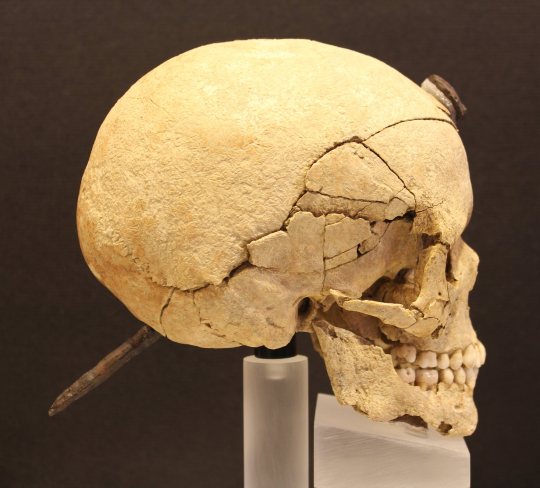
In various cities of the Ancient Iberians (Ancient Iberians were the indigenous cultures that lived in the Eastern coast of the Iberian peninsula before they got conquered by the Roman empire), archaeologists have often found skulls perforated by a nail. All of them have been found in the cities located in what nowadays is the Northern half of Catalonia (Ancient Iberian cultures, though related to each other, varied a lot area to area).
These are believed to be the skulls of their enemies, who were captured and beheaded. The enemy’s heads were nailed to the city walls or above the entrance door to houses, together with their weapons. Most of these heads belonged to individuals of the male sex, though some are female and a few belonged to children.
The Ancient Iberian language hasn’t been deciphered and their contemporaries didn’t write much about them, thus many aspects of their culture aren’t known for certain. Archaeologists have the hypothesis that this practice could be related to the way Celts exhibited the heads and hands of their enemies as war trophies, or related to a belief present in the ancient Mediterranean according to which cutting someone’s head off stopped them from reaching immortality. The Gauls even passed down the beheaded heads of their enemies to their children, as a prized possession that brought prestige. It’s a possibility that Northern Iberians were in touch with this practice.
Photos from the Ancient Iberian site Ullastret (Comarques Gironines, Catalonia) posted on National Geographic. Information from Rovirà i Hortalà, 1998 and MAC Ullastret.
#història#arqueologia#ullastret#catalunya#ancient iberians#antiquity#ancient history#ancient#archaeology#archeology#protohistory#war history#historical#historical artifacts#artifacts#anthropology#bones#european history#europe
115 notes
·
View notes
Text
Tocharian
Around 3,000 BCE, speakers of an early branch of the Indo-European languages decided to go for a little hike, and wound up all the way in South Siberia.
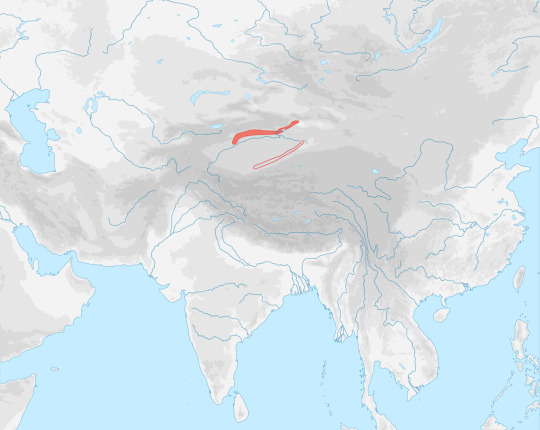
A few thousand years later, scholars discovered manuscripts in northwestern China dating to 500–800 CE that were shown conclusively to be written in a language from an early branch of Indo-European. They named this language Tocharian.

The discovery of Tocharian upset decades of research on ancient Indo-European languages and revitalized interested in them for two reasons:
Nobody even suspected that another branch of Indo-European existed, let alone in China’s Tarim Basin.
It was previously thought that the Indo-European languages were divided into eastern and western groups, based on whether the /k/ sound had changed to an /s/. The western languages that retained the /k/ were called centum languages (the Latin word for ‘hundred’, pronounced with an initial /k/), while the eastern languages with /s/ were called satem languages (the Avestan word for ‘hundred’). Yet Tocharian was a centum language sitting further east than almost any other language in the family. (Linguists later hypothesized that the centum-satem split wasn’t so much an east-west split as it was a spread of /s/ from the center of the language family outward, a change which didn’t reach the furthest members of the family).

Tocharian was written in a variant of Brahmi; here’s a sample of Tocharian script on a wooden tablet:

If you really want to challenge yourself, here’s a problem about Tocharian from the International Linguistics Olympiad:
#Tocharian#linguistics#language#historical linguistics#Indo-European#history#archaeology#China#Siberia#lingblr#langblr
252 notes
·
View notes
Text
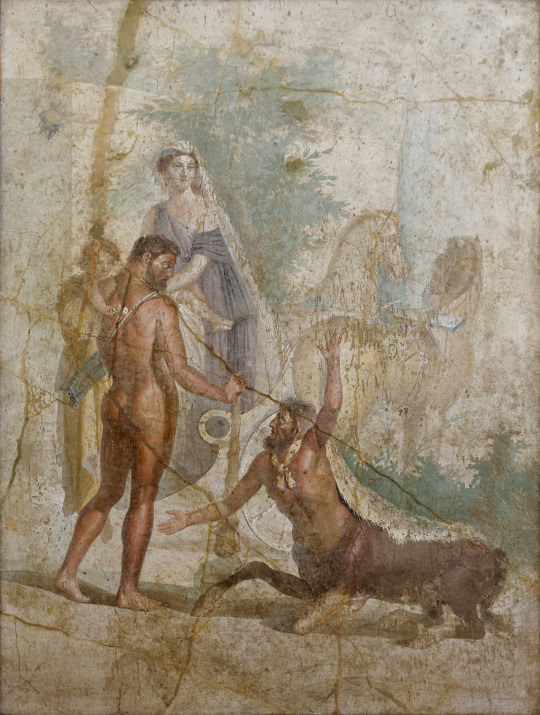
Hercules carrying his son Hyllus looks at the centaur Nessus, who is about to carry Deianira across the river on his back, 1st century AD
Naples National Archaeological Museum
#fresco#hercules#art#hyllus#greek mythology#cradle of civilization#southern europe#ancient#anthropology#archaeology#fine arts#fine art#nessus#centaur#civilization#western civilization#deianira#european art#classical art#europe#european#oil painting#mediterranean#europa#naples#greece#rome
237 notes
·
View notes
Text
Unknown lineage of ice age Europeans discovered in genetic study
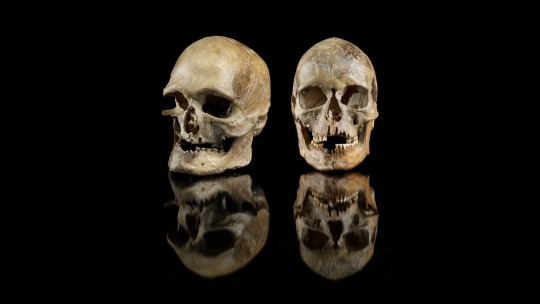
A previously unknown lineage of Europeans survived the coldest parts of the last ice age, only to vanish when Europe went through a warm spell starting about 15,000 years ago.
The discovery comes from the largest study yet to look at the genetic makeup of ice age European hunter-gatherers.
For most of the past 100,000 years, glaciers covered much of Europe. Starting about 45,000 years ago, hunter gatherers began arriving in Europe from Africa through the near East, toughing it out during the Last Glacial Maximum (roughly 25,000 to 19,000 years ago), the coldest part of the last ice age.
Archaeologists know about the first modern humans in Europe from the artifacts they left behind. However, few human fossils remain from those early cultures, so little is known about how these ancient people migrated and were related to one another. Read more.
459 notes
·
View notes
Text
Hello! I used to have this domain as a studyblr but since finishing my masters, I saw little point in continuing that route so I decided to start from scratch. So consider this a little introduction back into this site that feels completely strange to me despite growing up in the Tumblr golden era.
My name is Lis, I'm a PhD student in Scientific Archaeology focusing on the effects of animal domestication in Central Europe. I'm currently struggling to find a passion for a subject that I genuinely love so I'm hoping that coming back to this little corner of the internet will reignite my love for history and learning.
#studyblr#archaeology#history#ancient history#culture#anthropology#european history#ancient culture#genomics#genetics#phd diaries
75 notes
·
View notes
Note
Hey! idk if you'll know this or not already but they recently finally found the actual settlement in Rendlesham (which is major, we've known it was there but not where it actually was) where they found over 5000 items -including coins from byzantine empire and intricate jewellery- all ranging from 400-800ad and is the largest and wealthiest town from that period that has been found! there's a lot of info on this page. v interesting highly recommend: [no www!] heritage(.)suffolk gov uk/rendlesham
Oh man, this is awesome! And I love the site's offerings -- it's clear they're trying to engage the local community, and that they're talking about past excavation practices and current best practices. Love seeing ethical archaeology moving to the forefront!
A lot of classical history/archaeology/art crosses my dash, and I save a lot of it for the Roman Ruin book whensoever I may write it, and I have reached a point where I'm like "Am I saving up to write this book, or am I just hoarding antiquity like some kind of weird nerdy dragon?" :D
307 notes
·
View notes
Text
Me, a European archaeologist: makes archaeology tumblr posts about glass and silex
Most archaeologists reacting: obsidian!
Me: oh
14 notes
·
View notes
Text
Cuneiform is such a sneaky writing system, so many languages use it. Wonderful discovery.
109 notes
·
View notes
Text
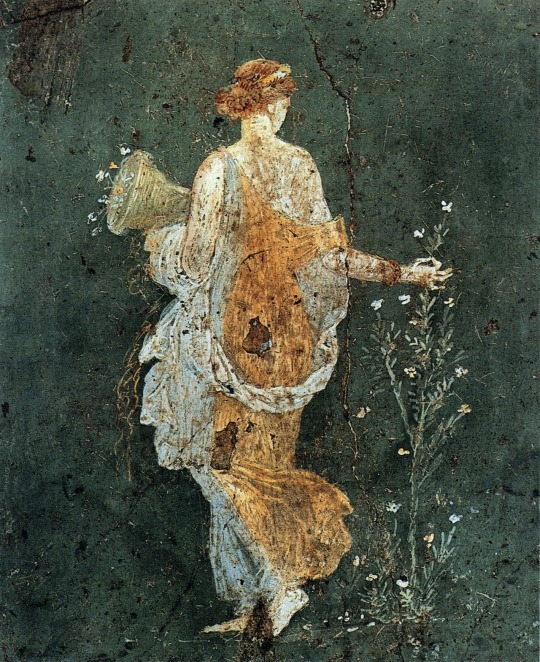
#maiden#roman#flowers#flora#spring#primavera#fresco#ancient rome#antiquity#archaeology#art#history#europe#european#villa of varano#stabiae#pompeii#naples#italy#southern italy#frescoes#woman#ancient#romans#villa#vases#vase
5K notes
·
View notes
Text
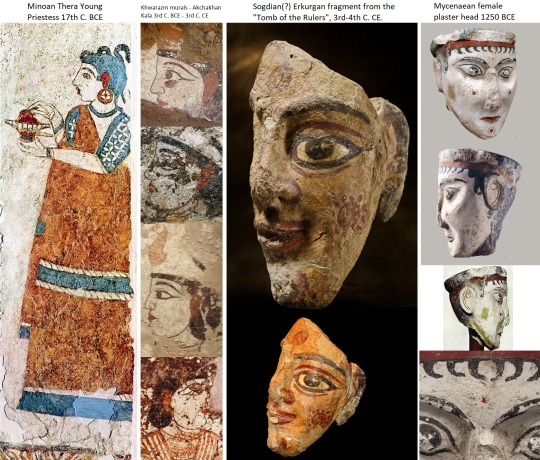
Comparison of Minoan, Mycenaean, Sogdian, & Khwarazm artworks 17th C. BCE - 4th C. CE
When I came across the Khwarazm (aka Chorasmian) murals I remembered this red-eared priestess from Thera. Their large eyebrows, red-painted ears, extremely light skin tone, and general facial features look very similar to each other despite being over 1,000 years apart and in different regions of the world. Other than that their clothing, jewelry, and hairstyle are quite different. I couldn't figure out what the significance of the red ears were, though Jason Earle speculates it might be an artistic depiction of a person hearing something divine from a deity (Cosmetics and Cult Practices in the Bronze Age Aegean? A Case Study of Women with Red Ears). These are the only images I've come across, that I can recall, of people with their ears painted red so I felt like comparing them.
The Erkurgan fragment has red solar symbols very similar to the Mycenaean plaster head. Again these two pieces of art are over 1,000 years apart and in different geographic locations. I don't know who the Erkurgan fragment should be attributed to, but this was a place in the heart of Sogdiana. I assume it represents a Sogdian because of location and time period, but that's just my assumption. Solar symbols appear in basically all civilizations, but I've never come across these specific red styled ones (that I can recall) except in these two instances. In both instances they appear on the cheeks, forehead, and probably the chin (the Erkurgan fragment's chin is damaged but seems to have some red paint). Again, seeing this unique symbol made me feel I should compare the two. From what I've read all the images here are generally thought to be depictions of females with religious significance.
#minoan#mycenaean#art history#ancient history#ancient#art#antiquities#history#paganism#pagan#goddess#priestess#indo european#ancient art#archaeology#anthropology#sogdiana#ancient greece
272 notes
·
View notes
Photo




Remains of the Miravet Castle in Cabanes (Castelló, Valencian Country).
This castle was first built in an unknown date during the Islamic period. In the year 1090, the Christian troops conquered it as part of their southwards conquest led by Rodrigo Díaz de Vivar, better known by the title el Cid Campeador, as it was immortalized by the famous 12th-century Castilian epic poem.
The castle is located on top of a hill, giving it an astonishing view over the whole area, including the coast. Though the castle is already located in a difficult place to access, its most easily accessible entrance was further protected with an artificial moat. In the lower area, there used to be a village with houses and a church dedicated to Saint Martin and Saint Bartholomew.
The castle was abandoned in the 16th century, and nowadays is in ruins.
Photos by angelets and Wikiloc. Info: Generalitat Valenciana.
#cabanes#país valencià#història#fotografia#castles#castle#history#medieval#middle ages#al andalus#al-andalus#historical#places#travel#landscape#european history#ruins#archaeology#archeology#photography#europe
103 notes
·
View notes